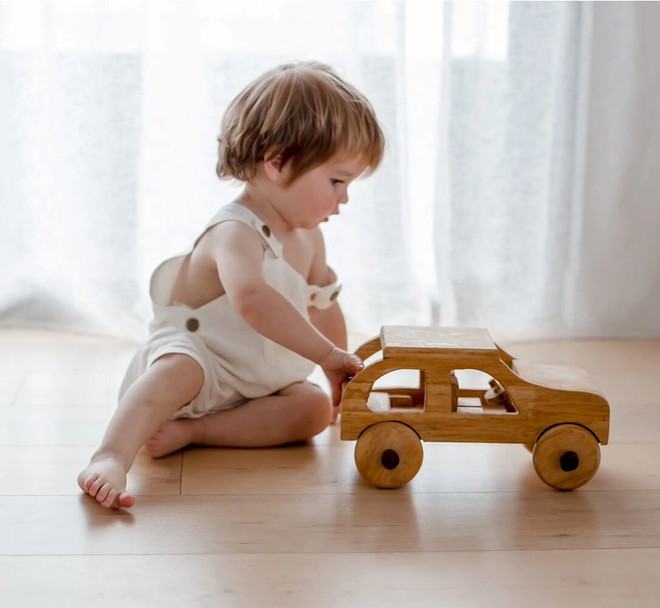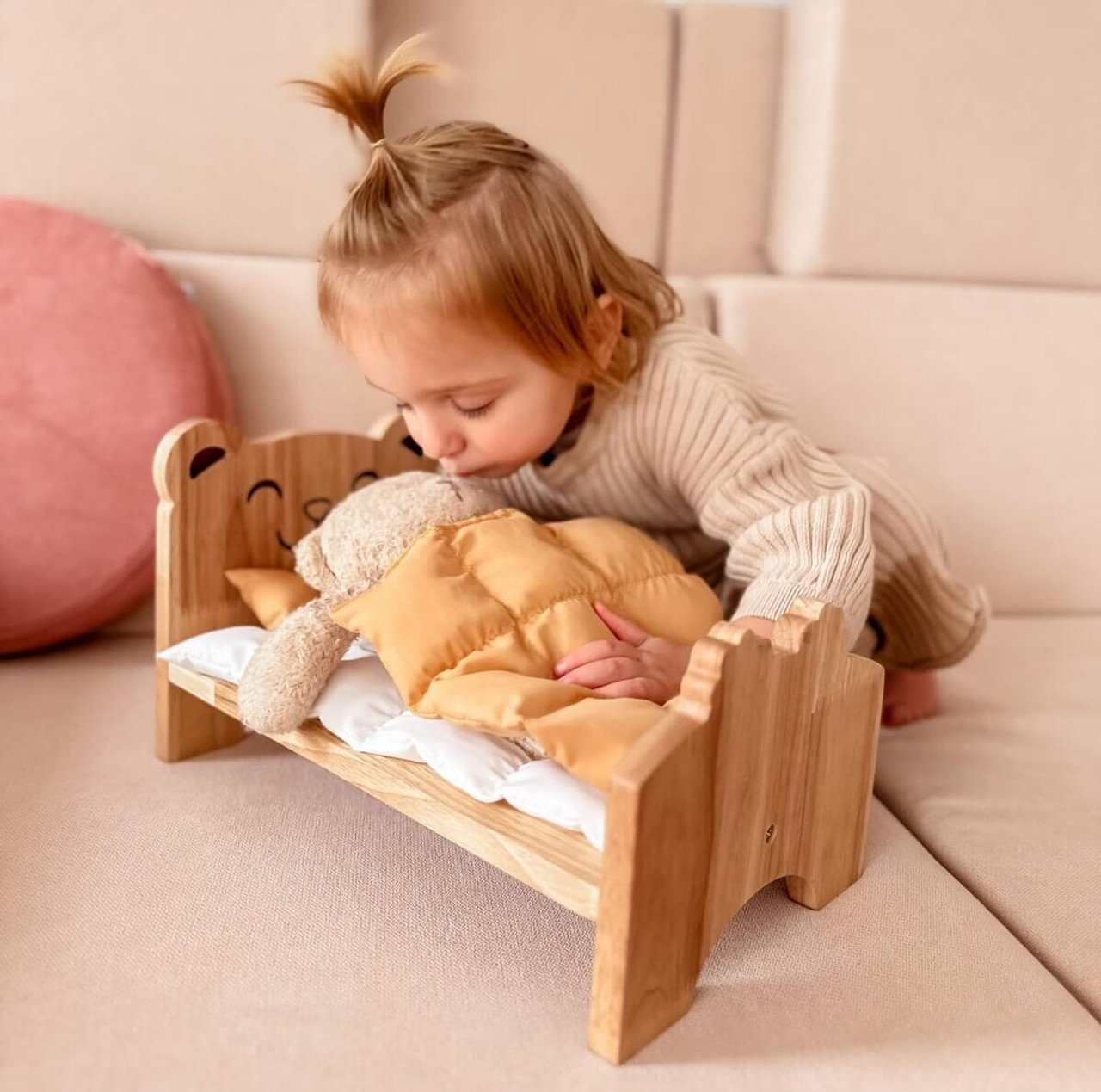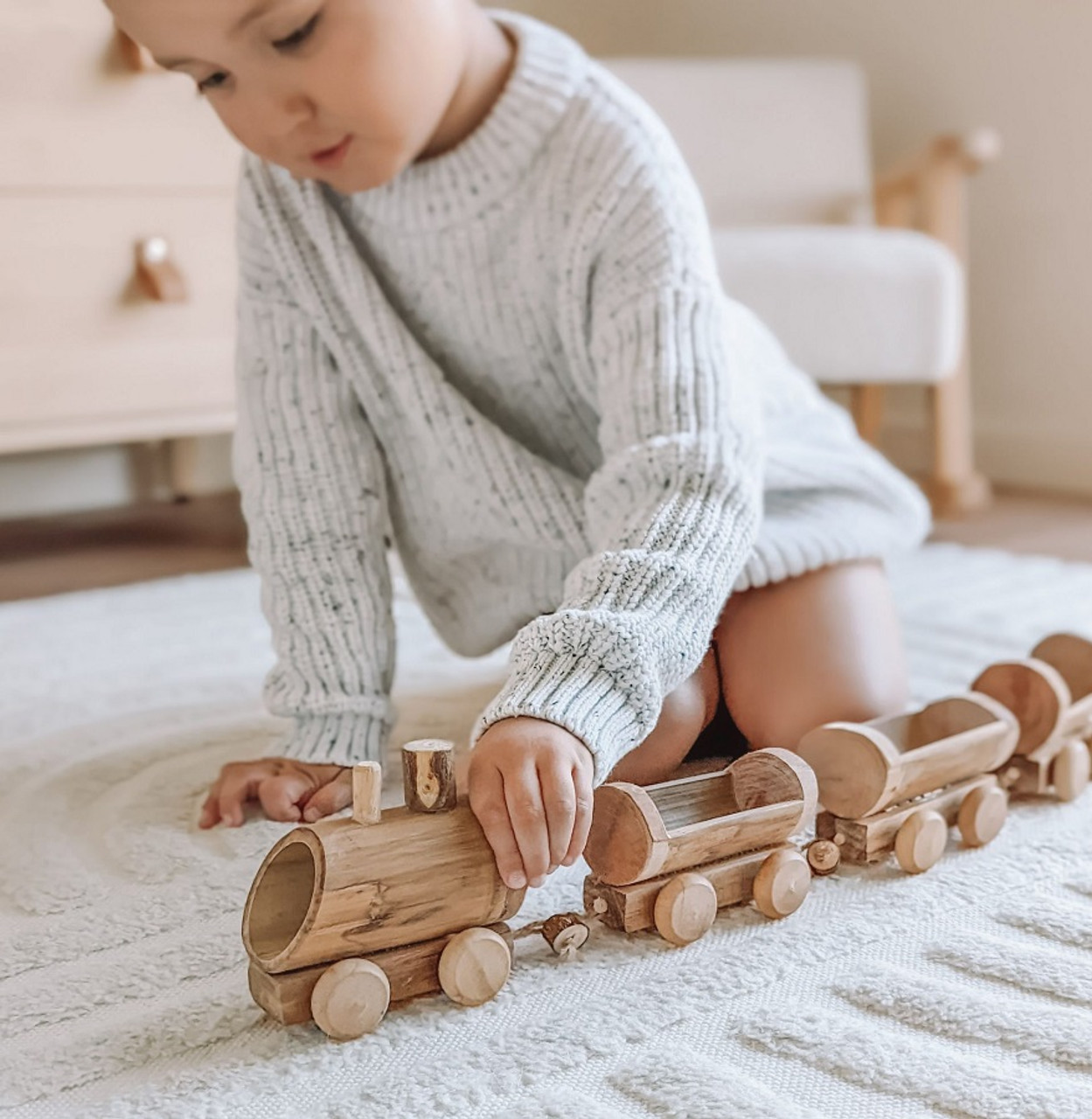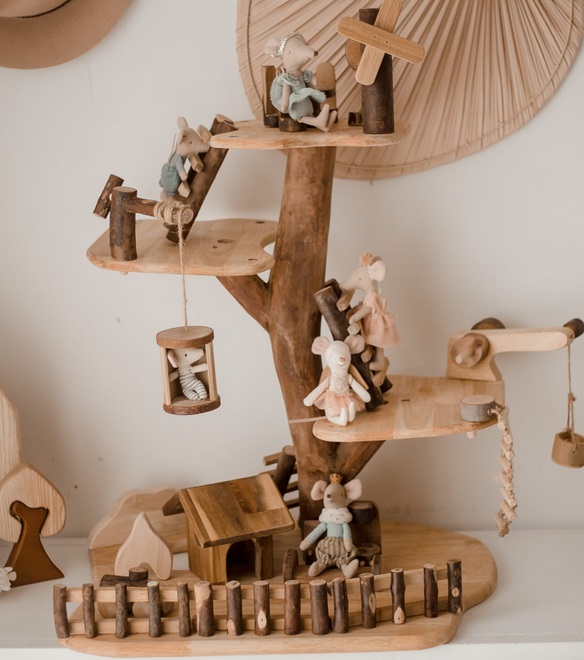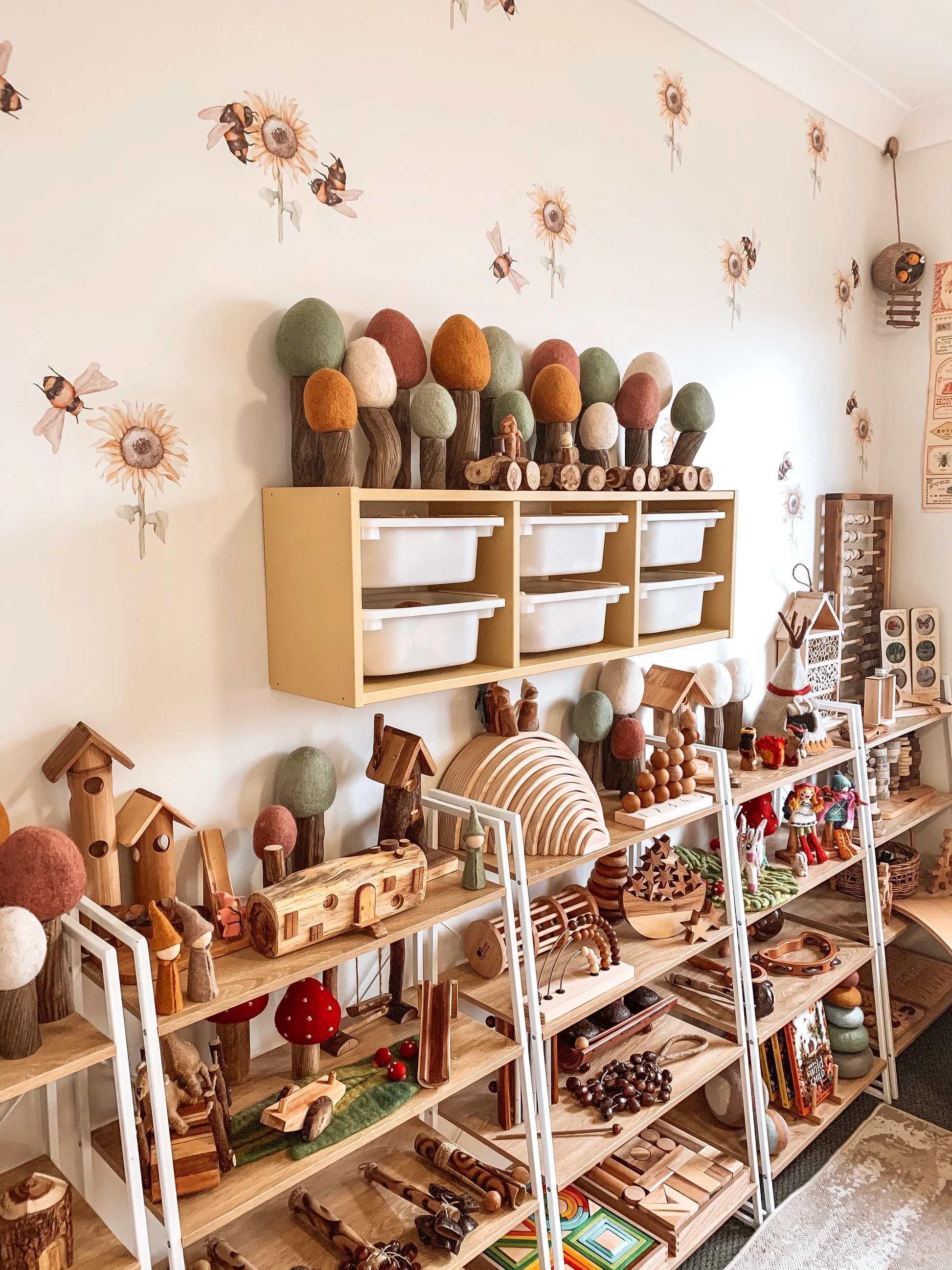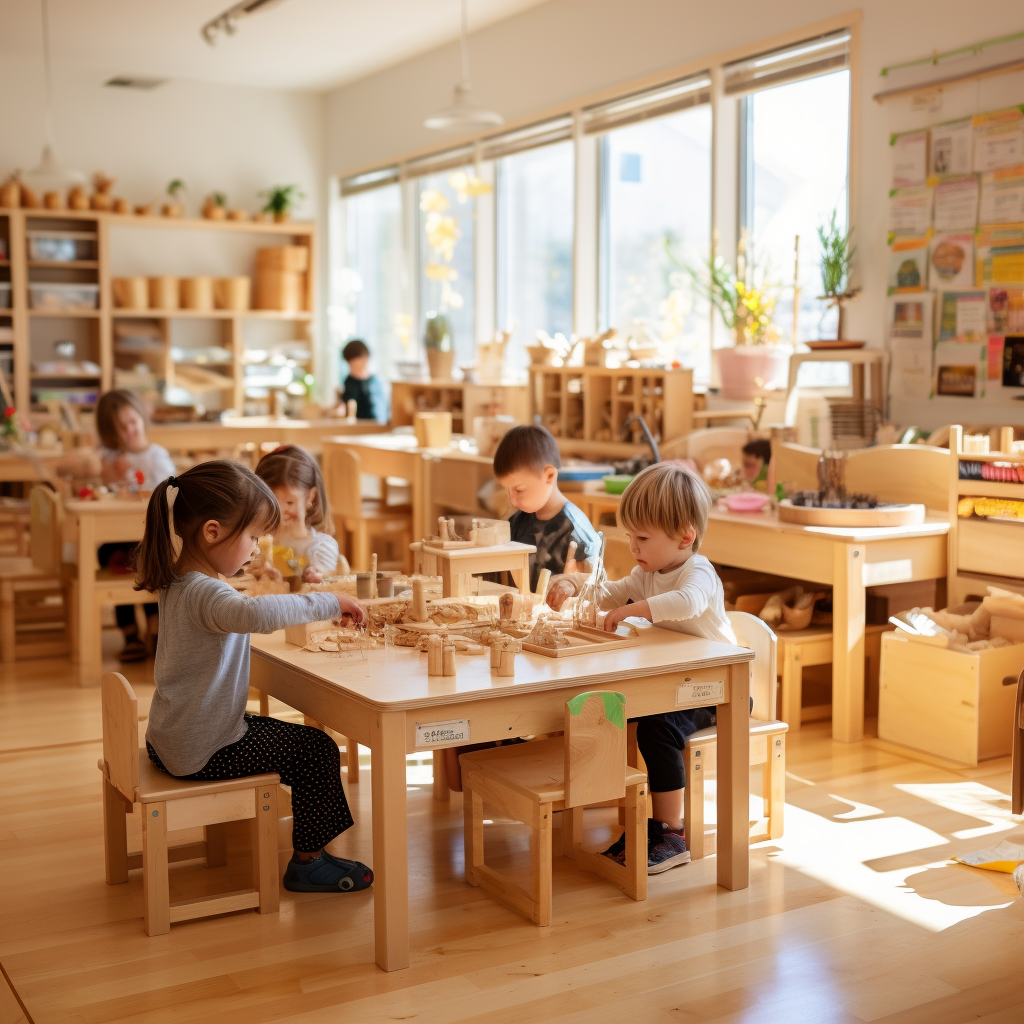Rediscover The Beauty of Wooden Toys
Posted by Farah-Lee on Sep 16, 2024
There is something innately beautiful, and almost calming, about wooden toys. The aesthetic quality of the natural wood grains, the smooth touch, and even the little imperfections, which give them a sense of being real.
Especially so, when you contrast them with noisy, cheap and polluting plastic toys. Being well aware of how harmful chemicals leach from plastic into our environment (and into our blood streams), as well as the pollution of their production and then after-waste, I’m a strong believer in purchasing a few quality, wooden toys, over mounds of plastic and noisy ones.
In a world full of increasing distractions, sensory overwhelm, and instant gratifications that are now only one click away, wooden toys offer a gateway for families into a world of slow living, present moments, and calming environments. The type of living that brings children back to their bodies and senses and re-connects them with the natural world.
The less bells and whistles the better. I want to go on this journey with you to rediscover the beauty of wooden toys.
More expensive, but cheaper in the long run?
Quality wooden toys may be initially more expensive than plastic toys (I’m not talking about mass produced MDF wooden toys), but are they cheaper in the long run? We believe so if we look at them overall:
- Plastic toys have a shorter lifespan, so they will need replacements more often.
- When you start counting the cost of each plastic toy bought or gifted, you’d be surprised at how quickly the cost has added up.
- Having fewer, but more sustainable and long lasting wooden toys, will cost less long term. A tip is to rotate what you have, so your child doesn't bore of the toys so quickly.
- You can choose a few toys at a time and display them on an open shelf at the child's level. This entices them to explore the toys and makes them easily accessible.
- Another idea, based on Montessori, is to put puzzle pieces inside a little basket and the empty puzzle base next to it. This entices a child more to try and complete it.
- Good wooden toys don’t have to cost an arm and leg. They can be sourced from facebook marketplace, local op shops, friends and family hand me downs, and toy libraries.
- The right toys, such as natural wooden ones, are an investment in your child’s wellbeing and health (see our table below) and can, when incorporated into a more wholesome lifestyle, improve physical wellbeing and mental health, staving off lots of costly bills later!
As a side note: For birthdays, holidays and special occasions put out a request to family and friends, who are often well meaning but may simply be unaware, about buying alternatives to plastic toys. Change starts at home!
Physical and Mental Health Benefits of Wooden Toys
SAFETY: Plastic toys can leach harmful chemicals, such as BPA, Phthalates and other lesser known ones, not only in their production but during play, like when mouthed or washed in hot water. Natural wooden toys are a much safter option.
SENSORY: Wooden toys provide a rich sensory experience. They have a natural texture, weight, and warmth that plastic toys lack. This can enhance a child's sensory development and tactile awareness.
EDUCATION: Wooden toys often promote open-ended play, encouraging children to use their imagination and creativity. They are typically simpler in design, which can help children develop problem-solving skills, fine motor skills, and spatial awareness.
Wooden toys, such as Montessori toys are often self-correcting, which means children need to discover the correct solutions on their own. These toys provide instant feedback, helping children recognize and correct their mistakes right away.
This immediate reinforcement aids in learning and retention of new concepts. It also fosters a sense of independence and confidence in their ability to solve problems. Examples of self-correcting toys include puzzles, shape sorters, pegboards, counting and sorting toys and more!
REGULATING: The simplicity of wooden toys can encourage children to engage more thoughtfully and patiently with their play, fostering mindfulness and concentration.
CALMING: Wooden toys usually do not have electronic components, lights, or sounds, providing a calmer and less overstimulating play environment. This can help children focus better and engage more deeply in their play activities.
AESTHETIC: Wooden toys have a certain beauty to them. This helps contribute to a nice environment, which has a positive effect on mental and emotional wellbeing.
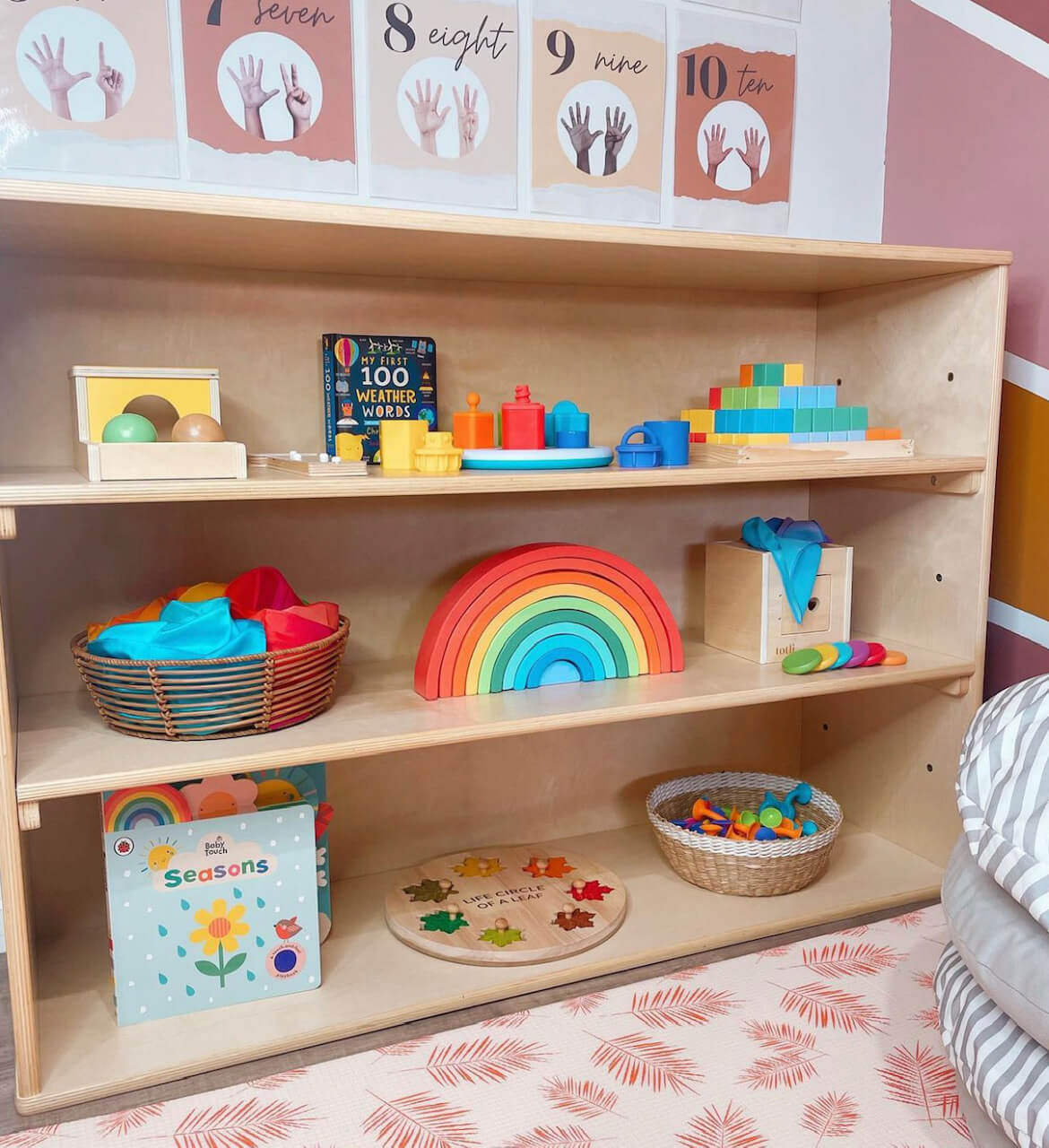
Not all Wooden Toys are Created Equal
Not all wooden toys are created equal; the quality and safety of wooden toys can vary significantly. The most ideal wooden toys are those naturally crafted from solid wood and made in, or specifically for, countries with higher toy regulation laws, such as Europe, Canada and the US.
Many of the famous European brands, such as Grimms, Ostheimer and Grapat meet these requirements. They are not affordable for most people, however when purchased brand new. Hence at KindtoKidz we offer more affordable brands.
One such brand is Qtoys, an Australian company who use solid and non-composite wood in many of their toys and furniture (MDF accounts for less than 10% of their toys). They also use non-toxic finishes like walnut or linseed oil – never any lacquers or other chemical coatings.
The problem with mass produced, cheaper wooden toys, like those made in unregulated factories in China, is that they may contain too high levels of lead in their paints, they may be sprayed with flame retardants, or they may not be safety tested for formaldehyde emissions.
Formaldehyde is a toxic chemical commonly used in the adhesive resins that bind wood fibers together in composite wood products like MDF. The most typical resins used are urea-formaldehyde (UF) resins, which are known to release formaldehyde gas over time. This process is known as off-gassing.
While we stock wooden toys with MDF and plywood, these are only from highly reputable companies, like Tenderleaf, Le Toy Van and Viga, which use non-toxic components and adhesives, and meet high safety standards, like the European EN71 Toy Safety Standard, which includes testing for formaldehyde emissions.
Tenderleaf, for example, are completely formaldehyde free. Still, we encourage parents wherever possible to choose solid wood toys as their first choice!
It is important to note that formaldehyde is not only present in certain wood products, but it’s used in the production of many items, including paper, fertilisers, and even some household, cosmetic and medical items. The same goes for lead and flame retardants.
So, although levels of toxic exposure to these chemicals may be very low in a particular toy, ongoing and repeated exposures from a variety of household items (including baby care and child care products), foods, and other exposures in everyday living, can add up. We therefore caution parents to choose all toys, including wooden toys, wisely due to potential chemical exposures.
One should be extra careful with toys that may go in babies’ mouth, and therefore for teething aged children, we only recommend non-painted, natural solid wood without any chemical finishes, such as from the Qtoys baby range.
It is also crucial for parents and caregivers to buy from reputable brands that prioritize safety and use high-quality, non-toxic materials and finishes. At KindtoKidz we stock brand with high safety standards and manufacturing procedures, even though these may be more costly. Parents and caregivers should aim to ensure that the wooden toys are not only durable and engaging but also safe for children to play with.
My First Encounter with Beautiful Wooden Toys
When I first became a mother, I got many plastic toys as gifts. But something didn’t feel right. I wanted to steer my children away from just cheap thrills. Searching for something more wholesome, more meaningful, I found myself falling into the lap of discovering the beauty of wooden toys.
At that time, I was not aware of alternative educational approaches or the world of natural, wooden toys. However being very environmentally conscious, and trying to bring my children up in the most non-toxic environment as possible, I was gravitating away from plastic toys. We instead choose to play with household items like wooden boxes, and bowls and wooden spoons, and a lot of outdoor play.
One day I was visiting an old school friend, and I noticed that she had a gorgeous Qtoys animal playset on her shelf.
I immediately fell in love with the gorgeous wooden grains and look and feel of this set. At that stage I had never heard of the famous European brands which were later to have an almost cult like following, like Grapat and Grimms. Even if I had, they would have been totally out of my price range.
At that stage, I was a stay at home mum with two children under two years of age, doing odd jobs here and there, and my husband was a student, almost finished his chemical engineering degree. We were barely surviving on Centrelink! Right away, I got in touch with Qtoys and offered my services to help them with content, in return for some store credit.
After I did some work on their product descriptions, I got my first lot of credit, I was so excited to order in some of their toys!
Little did I know that I would soon launch my own natural baby hamper business that would eventually sell wooden toys, and that one day I would become a big stockist of theirs.
As time went on, I started learning more about alternative schooling philosophies, where wooden toys are more prominent.
Educational Philosophies & Wooden Toys
Before I even became aware of Steiner, Montessori and other “alternative” educational philosophies, I was already imagining similar principes in action around play and child development. These schools of philosophy draw on toys and learning tools which are wooden, rather than plastic, and educational, rather than entertaining. And it’s not simply because they are more beautiful, but it’s because there is other value in these wooden toys.
For the purposes of this blog, I want to focus on Montessori and Steiner philosophies, which are among the most well-known educational approaches outside of mainstream. Wooden toys feature in both approaches.
Steiner & Wooden Toys
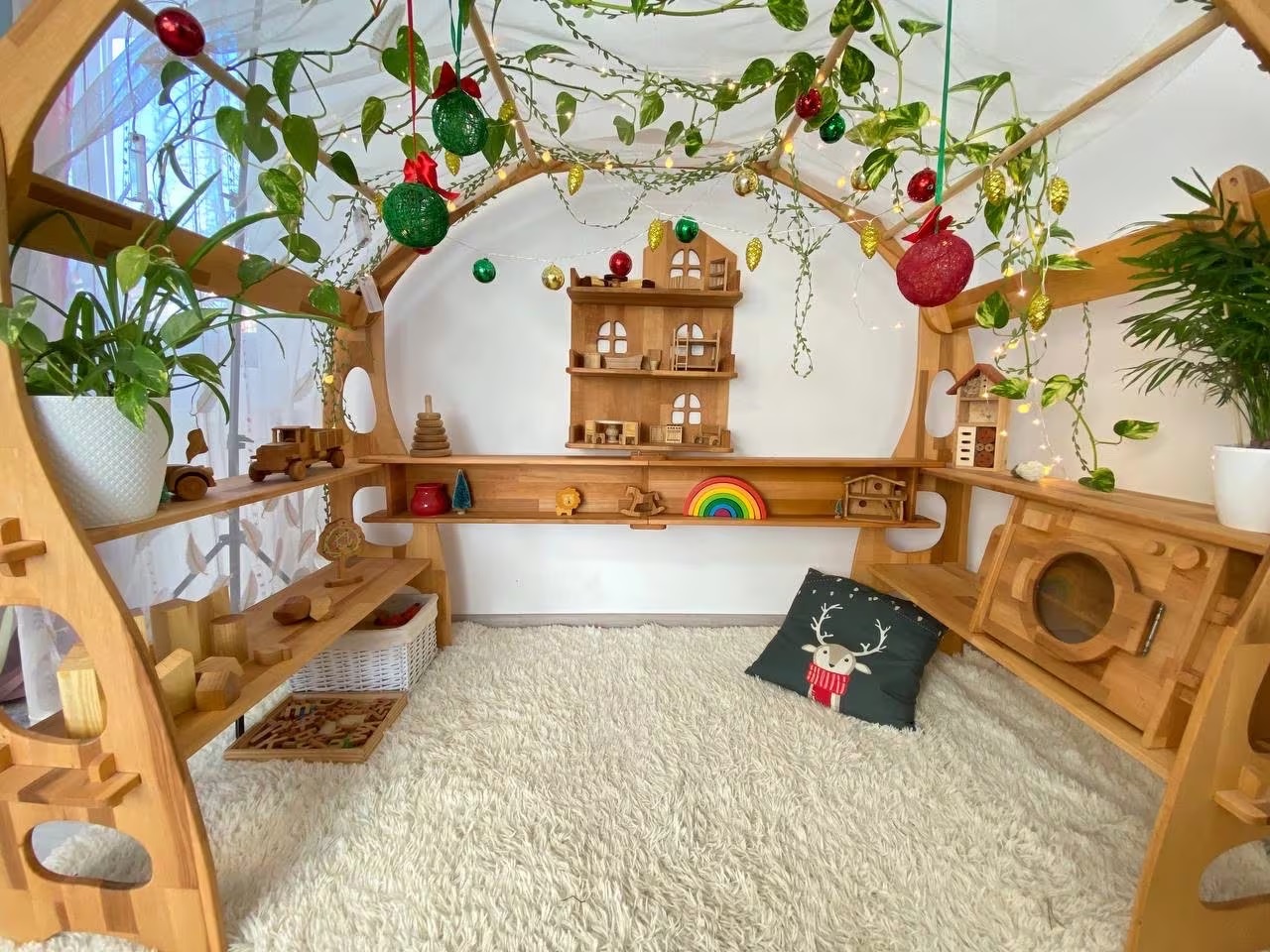
In Steiner philosophy, overstimulation from brightly coloured, overly detailed, or noisy plastic toys is believed to hinder a child's natural development. Simple toys, such as natural wooden ones, provide a calm and serene play environment, allowing children to focus and engage more deeply with their activities.
Toys made from natural materials like wood, wool, and cotton, provide rich sensory experiences. The textures, weights, and smells of these materials engage the senses more fully than synthetic toys, contributing to a child's sensory development.
As Cedarwood Waldorf school so beautifully puts it:
“Gifts from nature contain life-stories within. Wood reveals through its grain the milestones of growth and development of a tree. A round stone tells us of its long, long biographical journey. Silk is developed through the persistent work of silkworms. Shells carry a memory of life in the ocean.
We share our lives with nature, as we are part of it.
By contrast, there are so many things around us that contain no life.
Synthetic materials, plastic toys, electronic devices, media images, etc. Although they make look “real” and can be convenient and entertaining, they do not contain the beautiful quality of life that is inherent in objects made of natural materials.
Natural materials like the ones you see in our Early Childhood spaces and grade school classrooms develop a sense of life in young children. Whenever possible, our teachers choose toys and furnishings made of wood, cotton, silk, and wool to create warm and nourishing environments for our littlest friends.
There’s a reason that one of the most frequent remarks we hear from parents visiting the Early Childhood classrooms for the first time is “I wish I could have gone to school here!”
These spaces are designed to make us feel safe, as though we can fully relax into the cozy cocoon of our surroundings. And when we are completely at ease, our sense of life — and of health and wellbeing — is free to develop.
Children who develop this sense of life will become able to distinguish health from illness, essential from inessential, reality from caricature, and truth from untruth in their later years in life. They will be able to understand natural laws and cosmic order as their thinking capacity develops.
And, ideally, they will develop a capacity to bring healing and harmony to our planet, which so greatly needs it.”
Besides the beauty and naturalness of wood, Steiner also talks about the importance of toys being as open ended and ‘featureless’ as possible. For example, dolls are usually without facial expressions, and other toys are as simple as possible.
This requires children to use their imagination to bring them to life. Without predefined characteristics, a plain wooden block can become a car, a house, or an animal, depending on the child's creative vision. This open-ended play nurtures creativity and inventiveness.
Steiner education emphasizes meeting children where they are developmentally. Simple toys are appropriate for young children's developmental stages, allowing them to gradually build their abilities and understanding without being overwhelmed by complexity.
The Montessori Approach
Similar to Steiner, Montessori favours toys made from natural materials like wood, metal, cotton and glass. Unlike plastic, these materials inspire a connection to nature and the real world, while the different textures offer a sensory experience and encourage exploration. They also have real life consequences, like their ability to break or splinter, which teach children how to adjust their behaviour in response.
“Upon entering an authentic Montessori environment, one of the first things you will notice is the materials.
It is unlikely that you will encounter any cartoonish alphabet posters, any star charts, any brightly colored plastic cubbies or any plastic tables. What you will find is a variety of wooden, glass, and metal materials, sturdy child-sized furniture, house plants, and walls decorated with prints of classical artwork from cultures around the world.
Maria Montessori insisted that an environment as closely rooted in nature and reality as possible was the most beneficial to the individual child.”
– Renaissance Montessori School
Montessori environments are designed to be calm, orderly, and aesthetically pleasing. The natural look and feel of wooden toys contribute to a serene and attractive learning environment, which can help children feel more at ease and focused.
In Montessori, there is also an emphasis on connection to nature. Maria Montessori Montessori wanted young children to have close contact with nature, and also learn about the physical features of the world and its people. Using natural materials like wood helps children develop a connection to the natural world. This aligns with the Montessori emphasis on respecting and understanding the environment.
As the Montessori Academy in Sharon Springs, so succinctly explains:
“Dr. Montessori stressed the interconnectedness between humanity and nature. “The land is where our roots are,” she wrote. “The children must be taught to feel and live in harmony with the Earth.”



